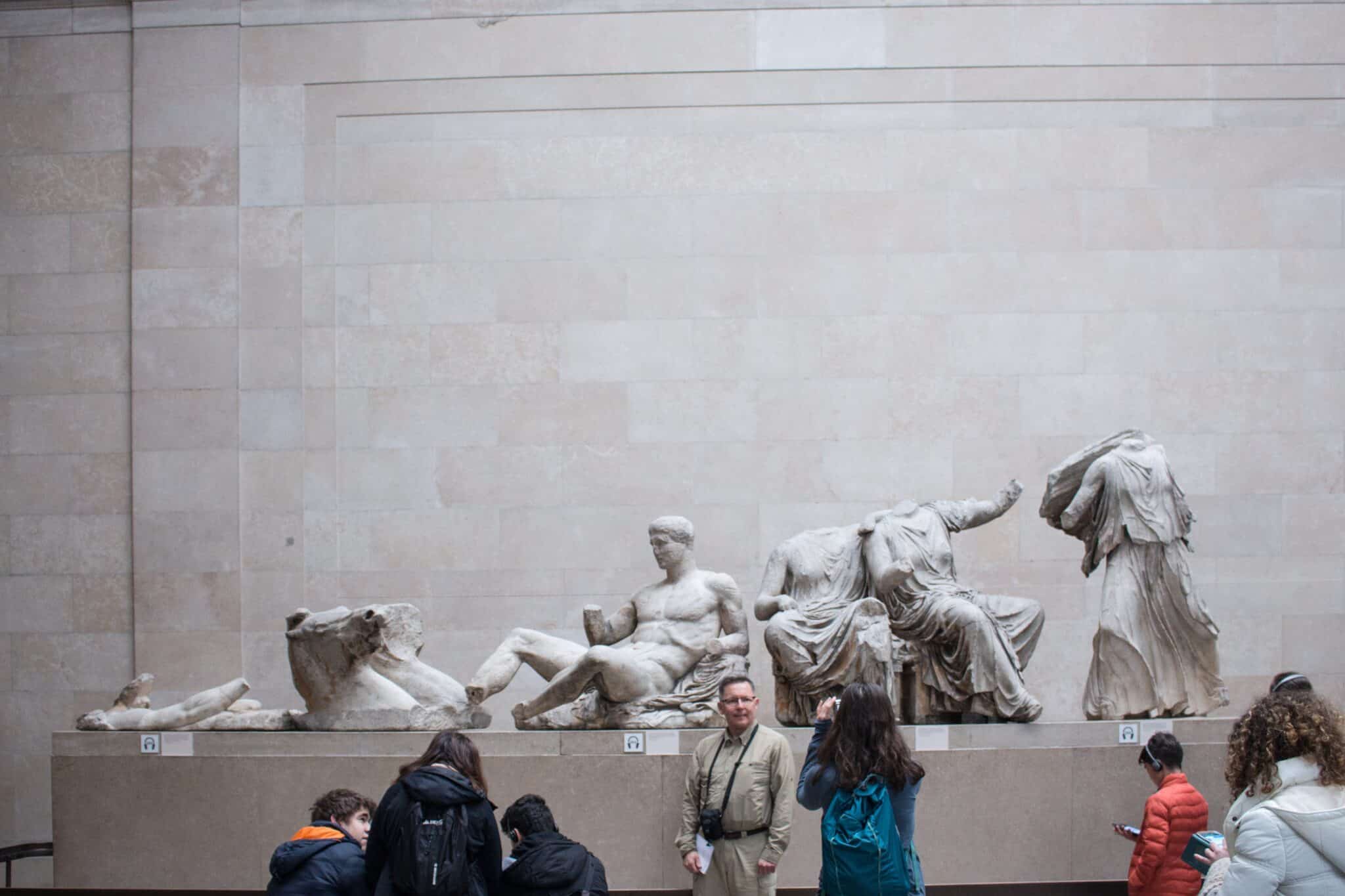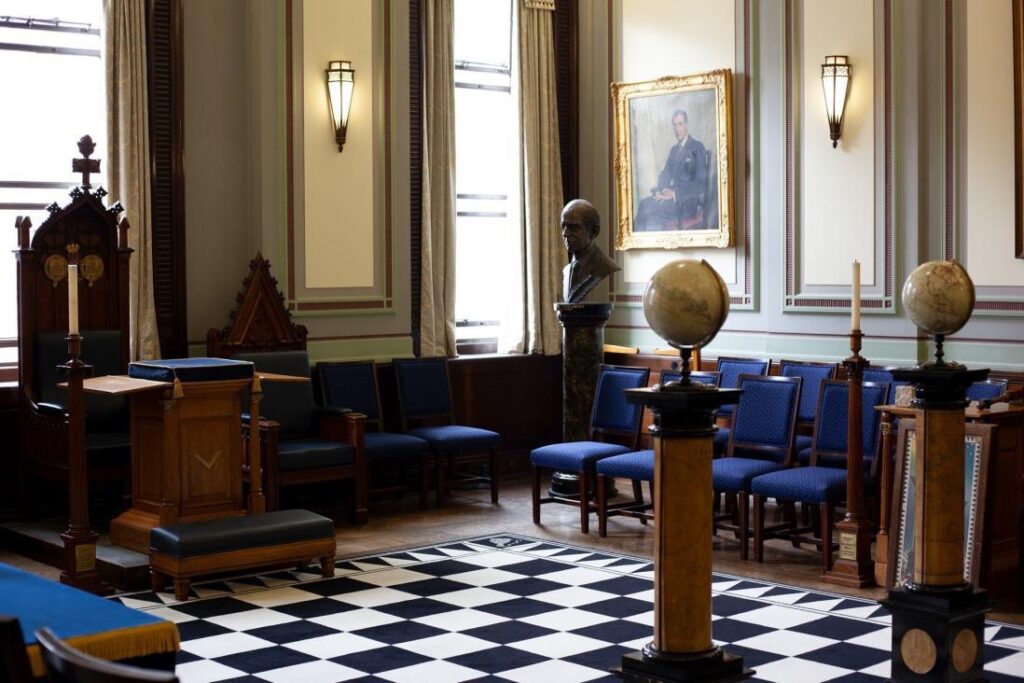
From Freemasonry to curious finds, ancient Egyptian artifacts to photography and cars, there’s plenty to do and see on London’s Museum Mile.
As you walk into the atrium of The British Museum, prepare for the breathtaking architecture that makes the museum a work of art in of itself. Probably the most remarkable piece in the gallery is the Rosetta Stone, which revolutionized the history of language with multiple inscriptions in Greek, Hieroglyphics, and Demotic – an ancient Egyptian script commonly associated with ordinary laypeople. This monument changed language as we knew it by providing translatable texts side-by-side with previously untranslated languages. The entire museum has a heavy influence in ancient Egyptian, Greecian, and Roman culture with thousands of artifacts. Medieval Europe, Ancient Asia, Ancient through Modern African art, and the Ancient Middle East are also represented, with fun visiting exhibits with tributes to Manga and Edvard Munch.
The SOAS Gallery highlights contemporary and historical exhibitions from Asia, Africa and the Middle East. If you enjoy Japanese Lacquer, Namibian music, and woven Arabian tapestries, you’re in luck! Any number of fascinating exhibits might be on at the Brunei at any given time. Explore textiles, music, sculpture, artistic items, and photography – and make sure to spend time on the Japanese Roof Garden and enjoy the view at this heart of London.

If you’re in the mood for something childishly fun, check out The Cartoon Museum and their collection of over six thousand original cartoon & comic artworks, with a library of over eight thousand books and comics. Life-like drawings, advertisements and satire, and bold, colorful graphics grace the walls of this engaging gallery. Learn about the evolution of cartoons, get a few laughs, and maybe even find a few new favorite comics. This museum is at the top of the list from the London Museum Mile for being very kid-friendly.
It’s always the best and worst of times at the Charles Dickens Museum! Make a stop at 48 Doughty Street, the London home of Charles Dickens, where he wrote some of his most famous works like Oliver Twist and Nicholas Nickleby. This splendid home allows you to explore his study, the family bedchambers, and the servants’ quarters below stairs. Find Dickens’s desk preserved with handwritten drafts from the novels he wrote, along with remnants of his family life and children. The house is frozen in time with original furniture, tableware, portraits, marble busts, china ornaments, and paintings.
The Foundling Museum examines the history of the Foundling Hospital, the United Kingdom’s first children’s charity and first public art gallery. Here you can follow the story of children who lived in the Hospital and how the residence was operated. The Hospital was heavily supported by the London artistic community, and the artwork spans from the eighteenth to the twenty-first century – everything from documents, records, musical scores and librettos, photographs and oral history recordings, as well as significant works of art, clocks, and furniture that was made specifically for the institution.
The Library and Museum of Freemasonry shows a history of Freemasonry in England through their extensive collection of Wedgewood, glass, metalwares, pottery and porcelain, silver, furniture and clocks, Masonic jewels, and various emblazoned regalia. Find the items that belonged to famous Freemasons like Winston Churchill and Edward VII. The library has a comprehensive collection of printed books and manuscripts on every facet of Freemasonry, both in England and worldwide. This library also houses books on subjects associated with Freemasonry or with mystical and esoteric traditions, Masonic music, poetry, and literature.

With life-size displays and fantastic models of all forms of transportation, The London Transport Museum is delightful for all ages. Take a stroll along all of the vehicles from trains, automobiles, carriages, and buses. This enchanting museum has photographs, artwork, signs, posters, uniforms, drawings, models, and technical documents on how people have traveled en masse throughout time. The evolution of transit has been diverse, and the museum covers all aspects in great detail.
Sir John Soane’s Museum is a historic house, museum, and library of the esteemed nineteenth century architect, Sir John Soane. At his request, the house has not been touched since his death almost two hundred years ago. Preserved antiquities, furniture, sculptures, over thirty thousand architectural drawings, paintings, and models are on display. Find rare antiquities next to Soane’s own sketchbooks from his travels and time abroad.
The University College London has three museums that are well worth your time in London. The Petrie Museum of Egyptian Archeology is considered one of the greatest and largest collections of Egyptian and Sudanese archeology in the world. There are over eighty thousand objects from the Ptolemaic, Roman, Coptic, and Islamic periods. Since the export of antiquities from Egypt and Sudan is now illegal, this museum has not grown in works of art, but has instead appreciated in value and is now protected by the government. This collection has a lot of the earliest pieces ever made, or some of the only surviving relics: the earliest linen and metal; the first worked iron beads; the earliest ‘cylinder seal’; the oldest wills on papyrus paper; the oldest gynecological papyrus, and the only veterinary papyrus, all from ancient Egypt.
Traverse the entire animal kingdom at The Grant Museum of Zoology and
Comparative Anatomy, the oldest natural history collection in the United Kingdom. You won’t find anything else like it in London – it’s the last remaining university natural history museum in the city. There are over sixty-eight thousand zoological specimens! Notable ones include the world’s rarest skeleton, the quagga (a now-extinct plains zebra from South Africa); thylacine specimens (the extinct largest carnivorous marsupial in the world); dodo bones (an extinct flightless bird), and large collection of models including the Blaschka glass models, Ziegler wax models, and Vernon Edwards extinct fish models.
The UCL Art Museum is a mix of sculpture, classical oil paintings, old Roman drawings, modern impressionist work, and plaster bas-relief monuments. The students curate the museum themselves and frequently change over the exhibits for class projects. They produce student curators who often frequent the museum, so you may even be able to meet them while you’re there!
The Wellcome Collection is self-described as, “the free museum and library for the incurably curious.” Here you can find exhibits like the Psychology of Magic, Personal Essays on Birth, Procreation, and Death, Ageing, The Spoken Word, and the permanent gallery on Sir Henry Wellcome’s personal collection of over a million books, paintings, and objects on health and medicine from around the world. Whet your appetite for stimulating and curious finds like Napoleon’s toothbrush, Nelson’s razor, Charles Darwin’s walking stick, Florence Nightingale’s moccasins, and even some of King George III’s hair.
[Written July 2019; Updated February 2025]


Leave a Reply